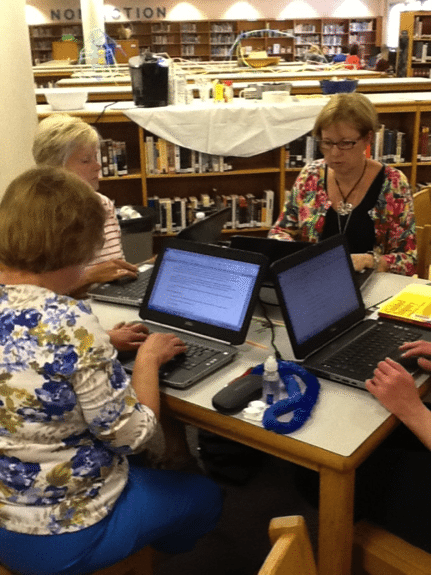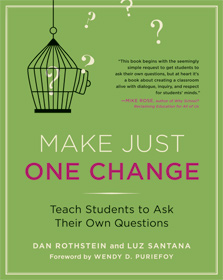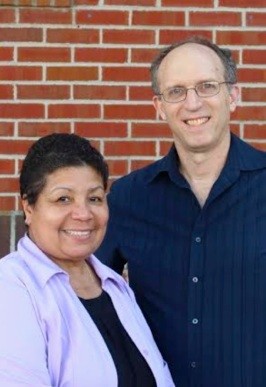When I was a building librarian, my partner and I always wanted students to develop those metacognitive skills in developing questions as they moved through the research process. Originally, we were moving them through another inquiry process and while this worked well with some students, many students and teachers felt that this method was too restrictive for them.
What an amazing way to give students the ownership of their own learning!
In 2012, I took on the position of Instructional Specialist, and I had a conversation with Lynne Bland, the Instructional Specialist for History and Social Sciences, about using the inquiry process as part of research and to develop a relationship with the library and the history departments at the secondary level. Lynne introduced me to the QFT process, and of course, as any good librarian would do, I researched the process. What an amazing way to give students the ownership of their own learning!
I decided I would use QFT in each of my librarian meetings so that it could really drive the focus of the meetings. All the librarians knew what each of the meetings goals and objectives were, and through this process, I was better able to guide the discussions and give the librarians the reigns in their professional growth. (I have sat through many professional developments that either were not what they said it was going to be or had nothing to do with what I did, so it was a waste of my time). I was determined not to waste the short amount of time I had with them by doing something that didn’t work or relate to what they were doing in their own libraries.
I was also lucky that the district had updated its comprehensive plan and that it put a large emphasis on students’ metacognitive development. We were moving to PBL and re-emphasis on inquiry based learning. How perfect for the library to take a front seat with these goals and objectives!
In Aug 2012, I introduced QFT to the librarians. We talked about the rules and why they were important to have, not only for themselves as participants in the process, but also for using this with their students. I gave them their Q Focus and off they went. At first, they were a bit skeptical of what they should do, and I had to give gentle nudges to just follow the rules.
Once they finished asking questions and we moved to categorizing questions, the real engagement occurred. These professionals really dug down and looked at their questions, often debating which questions were open and closed. I saw teamwork happen when they worked to change each type to the other. When it came to prioritizing questions, the way they presented their points for which questions should be their priority, I saw how passionate they had become to find the answers for the questions they formulated as a team. I then led them through my part of the new learning and asked them to keep track of their questions to see if I answered them during this portion.
Once I had done some direct instruction, they were asked to work in groups to come up with an action plan for how best to support inquiry learning in their library; they needed to look at what they were already doing, what could they do new and what questions did they still have that weren’t answered. These unanswered questions would be later answered on our Professional Learning Network (PLN) in Edmodo or would be the basis of our next meeting.
I have been doing this with every meeting. Each Q Focus I use is to drive the instruction of their professional development. We had lots of new initiatives to support the district’s comprehensive plan. I have used QFT introducing Guided Inquiry Research Process, Buck model of PBL, and this fall I will use it as we review Understanding by Design (UbD) for developing formative and summative assessments to support our new librarian evaluation system.
Below includes reflections from one of the librarians:
“I wanted to try something new and have the kids more engaged.”
” I didn’t want sponges, I wanted worker bees.”
“It was VERY HARD at first; they really wanted me to SPELL IT ALL OUT for them. They were frustrated. I was frustrated- I began to wonder ‘why on Earth did I do this?!’ They wanted affirmation that they were ‘doing it right.'”
“The first time around they did struggle and honestly, their feedback was more about how hard it was to create their own questions and that it was faster to just answer my questions. But as we did more activities like this, they really liked the power they had in directing their learning.”
 Lori Donovan is the Instructional Specialist for Library Services for Chesterfield county Public Schools in Virginia. She is a National Board Certified Teacher Librarian, and has a MSEd from Longwood University. Currently, she is President of the Virginia Association of School Librarians, has published articles in Library Media Connection, and a book with Katharine Lehman entitled Power Researchers: Transforming Student Library Aides into Action Researchers published by Libraries Unlimited. She has been using the QFT Process with her librarians since 2012.
Lori Donovan is the Instructional Specialist for Library Services for Chesterfield county Public Schools in Virginia. She is a National Board Certified Teacher Librarian, and has a MSEd from Longwood University. Currently, she is President of the Virginia Association of School Librarians, has published articles in Library Media Connection, and a book with Katharine Lehman entitled Power Researchers: Transforming Student Library Aides into Action Researchers published by Libraries Unlimited. She has been using the QFT Process with her librarians since 2012.






I am so honored to work with Lori Donovan. She is passionate about inquiry and is one of the best cheerleaders I know for the QFT. She and I will continue to collaborate in building connections between the library, teachers and students.
Lori Donovan brings passion to her craft! I’ve been honored to work alongside her on her journey of becoming a BIE certified PBL facilitator! She will do great things as she continues to carry the torch in her division.